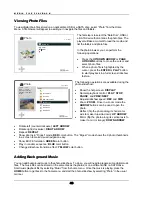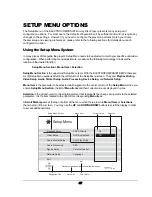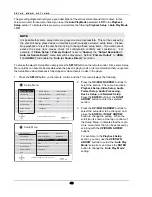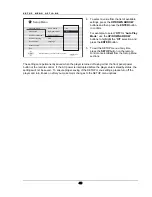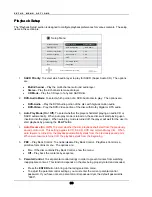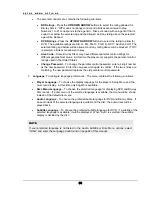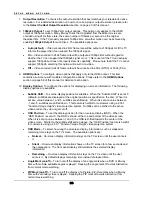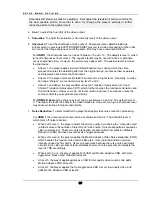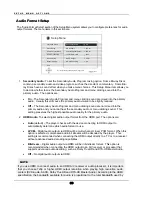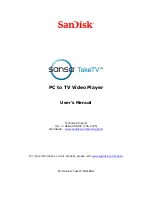
S E T U P M E N U O P T I O N S
58
Remember that excessive noise reduction may cause a loss of details. We recommend
using the noise reduction function only when you encounter poorly encoded or compressed
video that has apparent noise artifacts.
For
HDMI 2 & Analog
, the noise reduction level can be set between 0 and +3. The default is
level 0. When user increases the level, the player adjusts the picture quality by applying
mosquito noise reduction, random noise reduction and MPEG block noise reduction at the
same time. The higher level user sets, the more aggressive noise reduction functions apply.
The following picture adjustment controls are only available for
HDMI 1
video output:
8.
Color Enhancement
: To select the color enhancement level on the video output. This
enhances certain colors in the spectrum and enables vivid colors in outdoor scenes without
causing hue shifts, loss of detail or changes in skin tones.
9. Contrast Enhancement
: To select the contrast enhancement level on the video output. This
expands detail in shadows.
HDMI Options
HDMI Options are a sub-menu of the Video Setup menu. It allows you to configure some video settings that
are unique to the HDMI output. To enter this sub-menu, select “HDMI Options” from the Video Setup menu.
To exit this sub-menu, press the
RETURN
button or the
LEFT
arrow key. The following HDMI options are
available:
1.
Color Space (HDMI 1) –
To select the color space for the HDMI 1 output. The available
options are:
•
Auto (Recommended) –
The player checks with the display device to automatically
determine what color space to use. If the display device supports YCbCr 4:4:4, then it will
be used to avoid extra color space conversion.
•
RGB Video Level –
The HDMI output uses RGB color space and normal signal range
suitable for video displays.
•
RGB PC Level
– The HDMI output uses RGB color space and expands the signal range.
The expanded signal range is suitable for personal computer (PC) displays. Some TVs are
designed to be used as a PC monitor, and expect signal in expanded RGB range when the
DVI input is selected. For these displays if the video signal uses the normal RGB range, the
black-white contrast will be reduced. You can set the player to use the RGB PC Level
output and restore proper contrast.
•
YCbCr 4:4:4 –
The HDMI output uses YCbCr 4:4:4 color space.
•
YCbCr 4:2:2 –
The HDMI output uses YCbCr 4:2:2 color space. Generally this is the color
space that is closest to the color space encoded on the discs. (All discs are encoded in
YCbCr 4:2:0 color space, and the video decoder decodes it into YCbCr 4:2:2.)
2.
Color Space (HDMI 2) –
To select the color space for the HDMI 2 output. The available
options are the same as those for
Color Space (HDMI 1)
.
3.
Deep Color (HDMI 1) –
To select the Deep Color mode for the HDMI 1 output. Deep Color is
an OPTION for some TVs or projectors that feature HDMI v1.3 or higher input. Normally, each
pixel of the video image is transmitted using 24-bit data (8-bit per channel for R, G, B or Y, Cb,
Cr). If Deep Color is supported, each pixel of the video image can be transmitted using 30-bit
(10-bit per channel) or 36-bit (12-bit per channel) data. The increased bit depth should result in
smoother color transitions and better gradients. The available options are:
Summary of Contents for EMP 2
Page 1: ...EMP 2 High Performance Balanced Multiformat Player Owner s Manual ...
Page 2: ......
Page 6: ......



